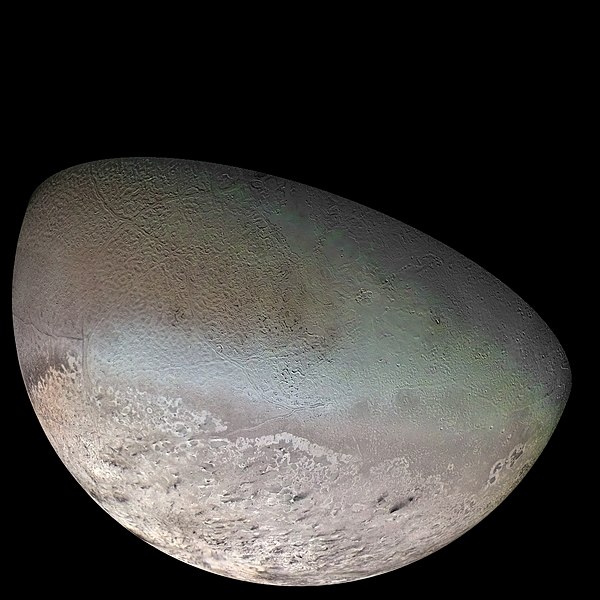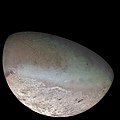Fitxer:Triton moon mosaic Voyager 2 (large).jpg

Mida d'aquesta previsualització: 600 × 600 píxels. Altres resolucions: 240 × 240 píxels | 480 × 480 píxels | 768 × 768 píxels | 1.024 × 1.024 píxels | 2.048 × 2.048 píxels | 4.700 × 4.700 píxels.
Fitxer original (4.700 × 4.700 píxels, mida del fitxer: 12,11 Mo, tipus MIME: image/jpeg)
Historial del fitxer
Cliqueu una data/hora per veure el fitxer tal com era aleshores.
| Data/hora | Miniatura | Dimensions | Usuari/a | Comentari | |
|---|---|---|---|---|---|
| actual | 21:40, 10 oct 2011 |  | 4.700 × 4.700 (12,11 Mo) | Jbarta | Minimally compressed JPG from TIFF original at NASA. This image has already been colored by NASA. I think we have no business trying to "fix" the coloring. The only alteration made from the NASA original is to enlarge the canvas to enclose the complete sp |
| 23:00, 1 gen 2010 |  | 4.600 × 4.600 (2,81 Mo) | Supportstorm | Image Adjustments: Auto levels on contrast and color | |
| 23:59, 18 feb 2008 |  | 4.600 × 4.600 (1,71 Mo) | Kaldari | same image, better dimensions | |
| 06:59, 8 abr 2005 |  | 4.500 × 3.500 (1,96 Mo) | Bricktop | same image, higher resolution | |
| 19:13, 3 abr 2005 |  | 1.024 × 796 (150 Ko) | Smartech~commonswiki | A color mosaic of Triton, Neptune's moon (large). Taken by Voyager 2 in 1989. Color was synthesized by combining high-resolution images taken through orange, violet, and ultraviolet filters; these images were displayed as red, green, and blue images and |
Ús del fitxer
Les 12 pàgines següents utilitzen aquest fitxer:
- Cronologia del descobriment dels planetes del sistema solar i dels seus satèl·lits naturals
- Exploració de Neptú
- Llista d'objectes del sistema solar en equilibri hidroestàtic
- Llista de satèl·lits naturals
- Neptú (planeta)
- Nomenclatura dels satèl·lits naturals
- Satèl·lit natural
- Satèl·lits de Neptú
- Tritó (satèl·lit)
- Voyager 2
- Viquipèdia:Articles espacials seleccionats
- Plantilla:Article espacial 01
Ús global del fitxer
Utilització d'aquest fitxer en altres wikis:
- Utilització a af.wikipedia.org
- Utilització a an.wikipedia.org
- Utilització a ar.wikipedia.org
- Utilització a ary.wikipedia.org
- Utilització a arz.wikipedia.org
- Utilització a ast.wikipedia.org
- Utilització a azb.wikipedia.org
- Utilització a az.wikipedia.org
- Utilització a ba.wikipedia.org
- Utilització a be-tarask.wikipedia.org
- Utilització a be.wikipedia.org
- Utilització a bg.wikipedia.org
- Utilització a bn.wikipedia.org
- Utilització a bn.wikibooks.org
- Utilització a bs.wikipedia.org
- Utilització a ckb.wikipedia.org
- Utilització a co.wikipedia.org
- Utilització a cs.wikipedia.org
Vegeu més usos globals d'aquest fitxer.


